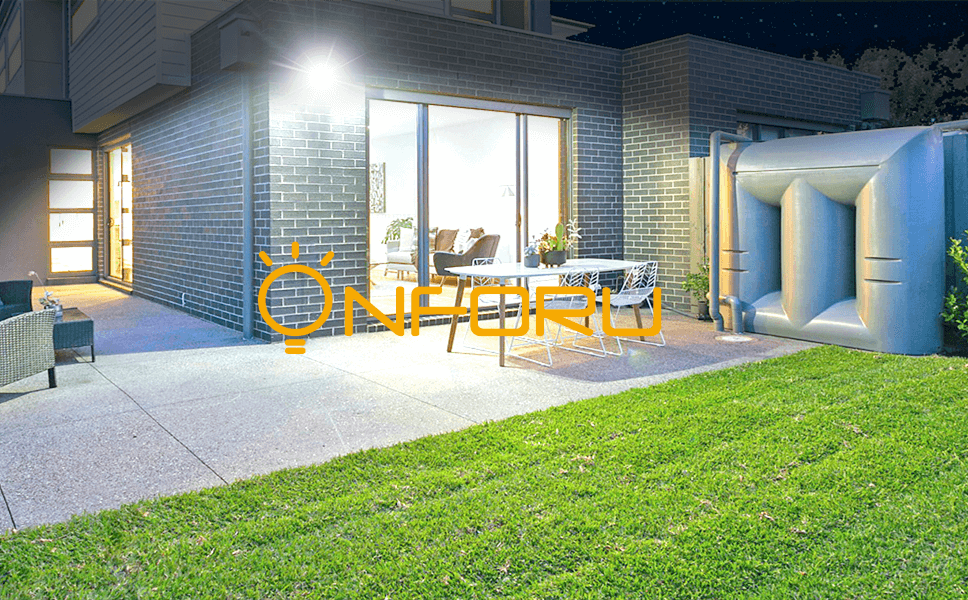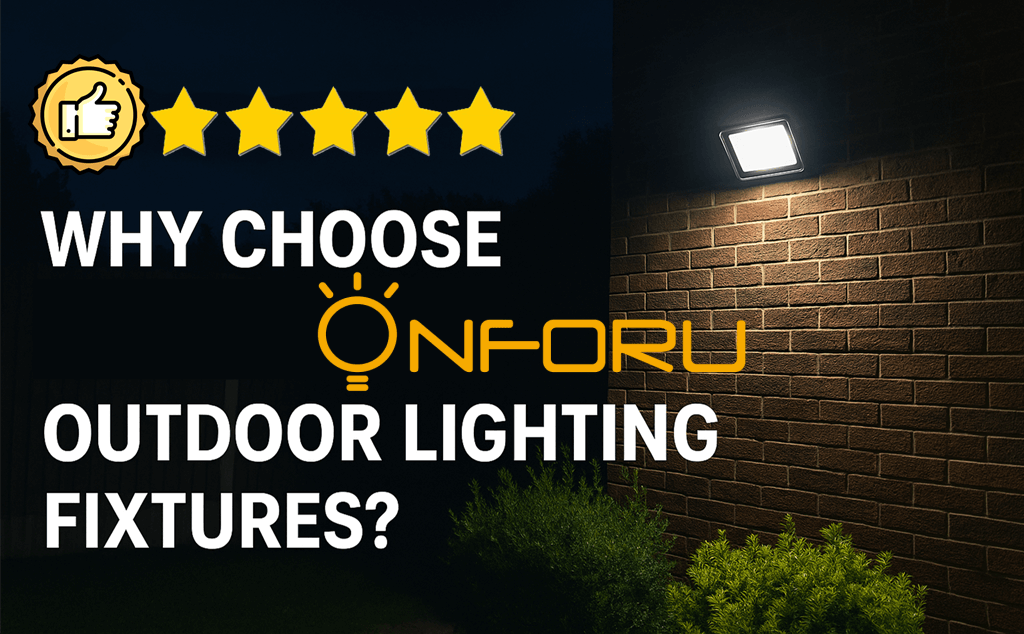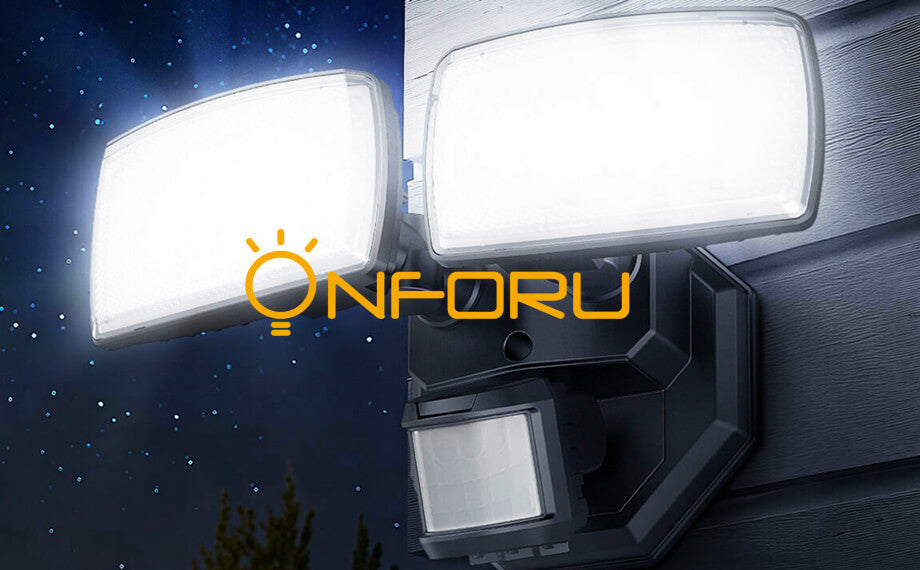What is the Best Type of Motion Sensor Light?

In our daily lives, safety and convenience are always at the forefront of our minds. And when night falls, lighting becomes our guardian, providing us with direction and a sense of security. However, traditional lighting devices often seem inadequate at night, unable to meet our needs for safety and convenience. It is for this reason that the emergence of motion sensor lights has become a bright landscape in modern life.
Motion sensor lights not only provide us with bright lighting at night, but more importantly, it has an intelligent sensing function that will automatically light up only when motion is detected, effectively saving energy and enhancing safety. This intelligent design makes the motion sensor light an ideal choice for both home and commercial locations. Whether it's in your home's patio or driveway, or in public places such as stores and offices, motion sensor lights can play an excellent role in creating a safe and comfortable environment.
In this article, we'll take an in-depth look at different types of motion sensor lights, from infrared (PIR) sensor lights to microwave sensor lights to acoustic sensor lights and dual-technology sensor lights, dissecting their features, benefits, and scenarios of applicability one by one. Let's explore together and choose the motion sensor light that best suits our needs to inject more intelligence and safety into our homes and commercial premises.
Analyzing Different Types of Motion Sensor Lights
When choosing a motion sensor light, it is crucial to understand its type and features. Below is a detailed analysis of several common types of motion sensor lights and their operating principles, features, advantages and disadvantages, and applicable scenarios to help you make an informed choice.
| Types | Principle of Operation | Advantages | Disadvantages | Scenarios |
| Infrared (PIR) Sensors | Utilizes passive infrared technology to detect infrared radiation emitted by humans or animals. | Sensitive reaction, low energy consumption, lower price. | Not suitable for environments with frequent temperature changes because it detects temperature changes. | Backyard, Corridor, Parking Lot |
| Microwave Sensors | Emits microwave signals and detects changes in signal reflection to recognize motion. | Strong penetration ability, can penetrate non-metallic objects, such as glass and walls. | Susceptible to environmental interference, high energy consumption | Commercial buildings, underground parking lots, industrial areas |
| Acoustic Sensors | Utilizes acoustic wave technology to detect changes in the sound of the surrounding environment. | High sensitivity, suitable for complex environments. | Susceptible to noise interference, high false trigger rate | Public restrooms |
| Dual Technology Sensors | Combines infrared and microwave technology and triggers only when both detect motion at the same time. | Reduced false triggering, more reliable. | Higher cost, complicated installation | Banks, Warehouses |
How to Choose the Best Type of Motion Sensor Light
1. Consider the place of use and needs
- Indoor or outdoor: Determine whether you need an indoor or outdoor motion sensor light in order to choose the right waterproof and durable performance.
- Trigger range: Choose the trigger range of the sensor light based on the size of the area you need to cover to ensure that you can cover the area you wish to monitor.
2. Understand the different types of sensors
- Infrared (PIR) Sensors: Suitable for common domestic and commercial locations, and are better for detecting stationary objects.
- Microwave Sensors: More sensitive to the detection of obstacles and are suitable for scenarios where you need to penetrate obstacles for detection, such as walls.
- Acoustic Sensors: Suitable for scenarios that require accurate distance measurement and positioning, such as parking lots or garages.
- Dual-technology Sensors: Combining the advantages of both sensors, they are usually more reliable and reduce the possibility of false alarms, and are suitable for places with high security requirements.
3. Pay attention to sensitivity and adjustability
- Sensitivity Adjustment: Some sensor luminaires provide sensitivity adjustment function to adjust the sensitivity according to the actual needs to avoid unnecessary triggering.
- Trigger Time Setting: some lamps also provide trigger time setting function, according to the need to extend or shorten the lamps on time.
4. Choose reputable brands and products
- Brand Reputation: Choose those brands with good reputation and word-of-mouth to ensure product quality and after-sales service.
- Product Evaluation: Refer to the evaluation and feedback of other users to understand the actual use effect of the product, which will provide reference for your choice.
Best Pick RIP Motion Sensor Lights at Onforu
| Products |
 |
 |
 |
 |
| SKU | ON-B65-BD08-DW-US-HS | ON-B75-BD86-DW-US-HS | ON-BS55-BD76-DW-US-HS | ON-B55-BD61-DW-US-HS |
| Wattages | 65W | 75W | 55W | 55W |
| LED Heads | 3 Adjustable Heads | 3 Adjustable Heads | 5 Adjustable Heads | 3 Adjustable Heads |
| Color Temperature | 6500K | 6500K | 6500K | 2700K-6500K |
| Luminous Flux | 6500lm | 7500lm | 5000lm | 5500lm |
| Waterproof | IP65(security light), IP44(motion detector) | IP65(security light), IP44(motion detector) | IP65(security light), IP44(motion detector) | IP65(security light), IP44(motion detector) |
| Features |
|
|
|
|
Choosing the right motion sensor light for your home or commercial space is an important step in improving safety and convenience. Different types of sensor lights have their own characteristics, and it's vital to choose the best type of fixture for your needs and usage scenario.
More Resources





Leave a comment